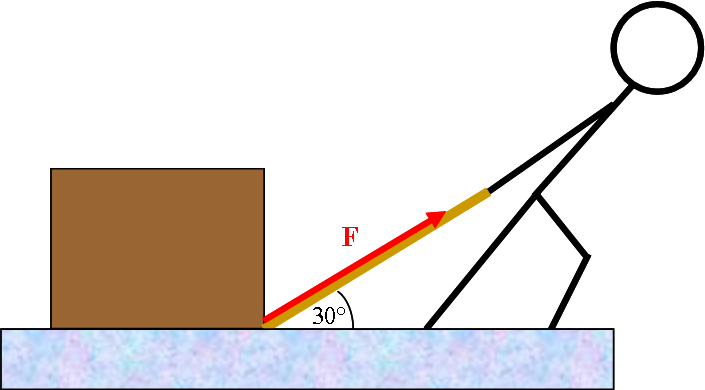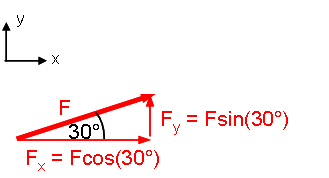Part B Image Added Image Added
A person pulls a box of mass 15 kg along a smooth floor by applying a force F at an angle of 30° above the horizontal.. The box accelerates horizontally at a rate of 2.0 m/s2. What is the magnitude of F? Solution System: Interactions: | Cloak |
|---|
| External influences from the person (applied force) the earth (gravity) and the floor (normal force). |
Model: Approach: Diagrammatic Representation Before writing Newton's 2nd Law for the x direction, we choose coordinates and break the applied force F into x- and y-components:  Image Added Image Added
Mathematical Representation The free body diagram implies: | Latex |
|---|
\begin{large}\[ \sum F_{x} = F\cos\theta = ma_{x}\] \end{large} |
| 


